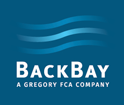“Content is king” isn’t a new concept by any means. What’s noteworthy today is how many companies across financial services have leaned into this way of thinking when forming their marketing strategies.
There are many examples of established brands like BlackRock and Robinhood building out extensive content programs (a recent Axios article includes a nice list of examples). Some have gone so far as to even acquire a media entity, whereas others have partnered with more established media players (i.e., Acorn’s strategic partnership with CNBC). It’s clear content has never played a more important role in marketing and communications.
All of this, of course, supports trends that we’ve identified in the past, underscoring the role and adoption rate of content marketing in private equity and across asset management. Our latest research, focusing exclusively on fintech, quantifies the adoption of content strategies among both leading names in the space as well as high-profile up-and-coming companies, while identifying the best practices that separate the very best storytellers from the rest of the pack.
Similar to the past two studies, the analysis revealed that content is trending toward ubiquity and many are producing fresh insights on a weekly basis (the report cuts the data further to quantify how fintech stacks up against its asset management peers). But given how many firms are now producing thought leadership regularly and the pace at which they’re doing so, simply producing content is no longer a differentiator.
What content giveth, content also taketh away
A simple litmus test for content quality is that it needs to either inform, enlighten or entertain. As noted in the report, content for contents sake can likely harm your brand, especially if it comes off as inauthentic (i.e., too promotional) or seeks to talk above the target audience (through relying on jargon that distracts and confuses most readers).
(InvestmentNews’ Ryan Neal summed this point up nicely in a recent piece detailing his top five buzzwords that need to die.)
Many companies are still wrestling with the best way to convey their expertise.
One example, outlined in the report, looked at two companies who took polar opposite approaches in producing insights around SEC Modernization (a classic cocktail party topic for many of you, I’m sure). One firm, for instance, chose to focus exclusively on the uncertainty created, and in the process revealed all that they didn’t understand about the regulation. Another, in contrast, produced nearly two dozen content pieces on the regulation, highlighting all that they did know. They didn’t “tell” the readers they were experts; they demonstrated it through offering key data points, guidance on best practices and, putting a stake in the ground on the topic. Most importantly, they made SEC Modernization interesting, which is no small feat.
This is just one of the great bits of insight included in the report. The report also examines content distribution and social media strategies, and highlights best practices along the way.
We encourage you to download the report if you’d like to read more. And of course, we’re happy to personally discuss the findings with you and answer any questions you may have.


